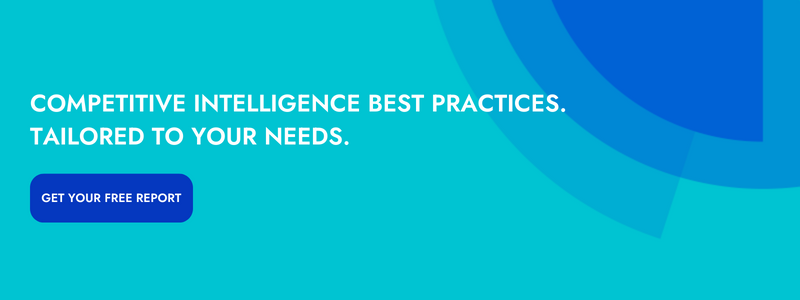Every product marketer has been asked by a sales rep, somewhere between one and a million times, for a feature comparison checklist. “I need to see how we stack up. Does our competitor have X feature? What about Y?” But product marketers know this is dangerous territory. Why are competitive comparison checklists so terrible, and how do you avoid them? We asked product marketing experts to share their thoughts.
Why Feature Checklists Are the Dreaded Sales Enablement Collateral
Feature checklists are one of the most commonly requested pieces of sales collateral, yet one of the least impactful. In fact, feature checklists can be detrimental to a sale rather than helpful. Here are just a few of the reasons why:
- They get out of date very easily, leaving the sales team exposed to share inaccurate and irrelevant details
- They focus the conversation on features rather than benefits, so the “winner” becomes the company with the most check marks instead of the best solution
- They don’t offer talking points for how to handle objections around lack of features or why the company may intentionally choose not to develop a certain feature
- They can be overwhelming, throwing lots of product details at a sales rep without any actionable takeaways
- Yet they’re still too generic because there’s only so much detail you can provide when naming each feature and whether or not a competitor has it, doesn’t, or has a partial solution
- They weight each feature equally, rather than highlighting what is most important to your target personas
- The ratings are subjective, which can lead to more debate rather than helpful conversation
NEED COMPETITIVE INTELLIGENCE BEST PRACTICES? USE OUR FREE TOOL >>
Why Sales Reps Keep Asking for Them
So why do sales reps keep asking for these terrible comparisons? Oftentimes, this comes from a need to know more about a competitor, to feel confident in navigating a competitive conversation. It’s also possible they got into a sticky conversation where they got a question or objection regarding a competitor’s feature, and they didn’t know how to respond.
The real way to find out why your sales reps keep requesting this is to ask them. Just like a product manager would ask for a customer to describe the problem they’re trying to solve, rather than what buttons they’d like added, the product marketer can ask their customer, the sales rep, what challenges they’re experiencing. This will be an important first step in finding a more effective solution for their use case.
What to Do Instead of That Feature Comparison
So you’ve committed to finding a better solution than a feature comparison sheet. Now what? Here are a few suggestions on how to solve the underlying sales challenge with more effective approaches.
Separate competitive enablement from customer due diligence
Clint Sprauve of GitLab explains, “If the rep is asking because of a competitive situation, I will set up a call to discuss the details with them to get clarification and the actual need. This allows me and the team to see if this is an actual need, or if they need to understand specifically what our capabilities are in a particular area. This helps to drastically reduce the amount of work on the PMM side, and gives the rep what he really needs.”
Focus on strengths and weaknesses and fill in the gaps with FAQs
Your sales team is hungry for information on how your solution stacks up to the competitors’, so you need to provide something. Instead of features, though, focus on overarching strengths and weaknesses tied to your differentiators. This is where the conversation should go, especially since those points should tie to your own persona research and what’s most important to your customers. If there are specific feature questions that come up again and again, that could be worthy of inclusion in a FAQ for sales or objection handling training.
Leverage customer stories and soundbites
Joe Booth of SecureAuth suggests using customer stories as the focal point for those sales conversations. “We are working on getting our reps to use language like ‘Our customers chose us over the competition because…’ rather than ‘We're the only company that can do…’ It's been a hard habit to break for them, but we see progress. One of the things I do to support that growth is provide customer stories (2-3 short bullets) that align our strengths to the customer's pain. If the prospect is also experiencing the same pain, we know that there's a good chance we can win the deal.”
Create a benefits comparison checklist
Instead of focusing on features, we want to focus our prospect conversations on the benefits they’ll see by choosing our solution. So if you’re still getting pushed to create a comparison checklist, why not try a benefits-oriented one? This will allow your team to focus on what matters - benefits - and truly showcase how your solution compares to competitors on the dimensions that are most impactful.
Provide visual or interactive introductions to competitor solutions
It’s possible that what your sales team wants is simply an orientation to competitor solutions. They may need more context for the positioning you’ve provided to them and to internalize some of the key differences. If this is the case, consider more visual or interactive ways to provide competitor overviews. A short video on a battlecard or a live training can go a long way to get your team comfortable and confident and even give you another platform for reiterating your advantages.
With all of these tools in our tool belt, I imagine we’ll all still get those requests for feature comparison checklists. But at least we can better steer those requests to something more productive. And in the process, we’ll be able to have a positive impact on the sales rep and the company while avoiding the potholes presented by ineffective collateral.
Have other ideas? Read more or contribute to the conversation here and here.

Seeing is believing! Check out Crayon for yourself.
Take a Product TourRelated Blog Posts
Popular Posts
-
 The 8 Free Market Research Tools and Resources You Need to Know
The 8 Free Market Research Tools and Resources You Need to Know
-
 6 Competitive Advantage Examples From the Real World
6 Competitive Advantage Examples From the Real World
-
 How to Create a Competitive Matrix (Step-by-Step Guide With Examples + Free Templates)
How to Create a Competitive Matrix (Step-by-Step Guide With Examples + Free Templates)
-
 24 Questions to Consider for Your Next SWOT Analysis
24 Questions to Consider for Your Next SWOT Analysis
-
 How to Measure Product Launch Success: 12 KPIs You Should Be Tracking
How to Measure Product Launch Success: 12 KPIs You Should Be Tracking



